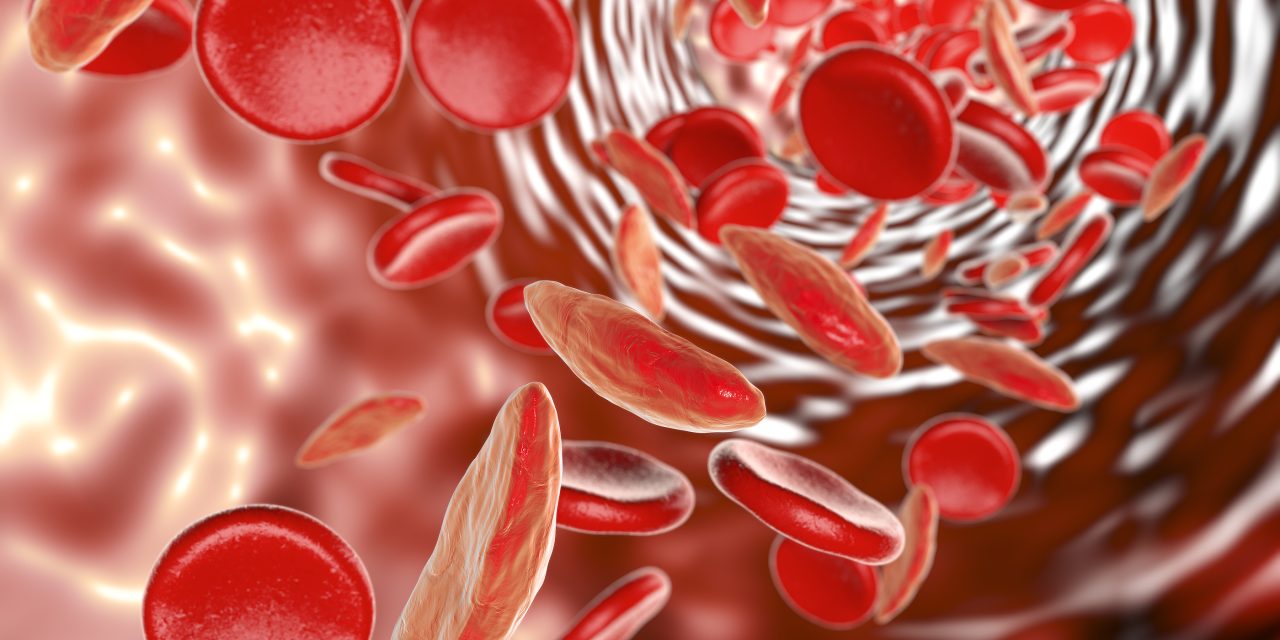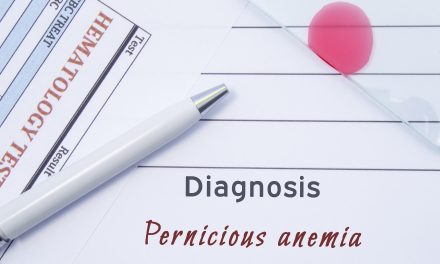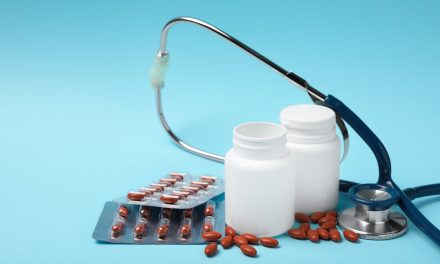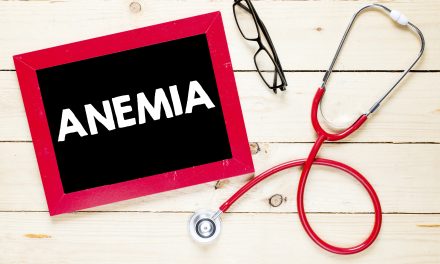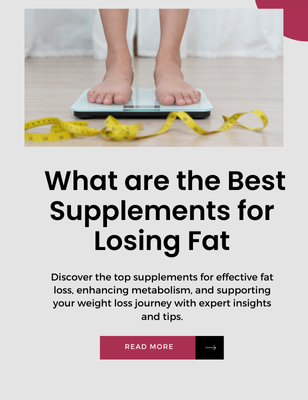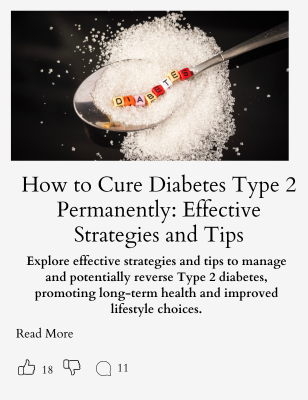Iron is an essential mineral crucial for various bodily functions, including the formation of healthy red blood cells and the transportation of oxygen throughout the body. An adequate level of iron is vital to avoid iron deficiency and anemia, which can lead to fatigue, weakness, and other health issues. For individuals with low iron levels, increasing their iron intake quickly is often a priority. Supplements can play a key role in boosting iron levels efficiently, especially when dietary changes alone are insufficient or when an underlying condition impedes iron absorption.
Choosing the right iron supplement is important for improving iron levels effectively without causing adverse effects. There are different types of iron supplements available, and their effectiveness can vary based on the form of iron, dosage, and an individual’s specific needs. It’s also critical to understand the importance of optimizing iron absorption to ensure the maximum benefit from supplementation. This involves knowledge of when to take iron supplements and how to combine them with other nutrients that enhance absorption, as well as recognizing factors that may inhibit it. Additionally, monitoring one’s iron levels, understanding potential side effects, and being aware of interactions with other medications are all part of managing iron supplementation responsibly.
Key Takeaways
- Supplements can effectively increase iron levels quickly when dietary intake is insufficient.
- Selecting the right type and timing of iron supplementation is crucial for optimal absorption.
- Monitoring iron levels and consulting healthcare professionals are essential for safe supplementation.
Understanding Iron Deficiency
Iron deficiency occurs when the body lacks sufficient iron to produce the hemoglobin it needs for red blood cells to effectively transport oxygen. This condition can lead to anemia, characterized by fatigue and weakness.
Causes
- Dietary Lack: An inadequate intake of iron-rich foods.
- Absorption Issues: Difficulty in absorbing iron due to intestinal disorders.
- Menstruation: Women may lose iron through heavy periods.
- Pregnancy: Increased demand for iron while expecting.
Symptoms
- Fatigue
- Weakness
- Paleness of skin
- Shortness of breath
- Headaches
Risk Factors
- Age: More common in children and pregnant women.
- Diet: Vegan or vegetarian diets might lack sufficient iron.
- Medical Conditions: Such as celiac disease or inflammatory bowel disease.
- Blood Loss: From surgery or injury.
Diagnosis
Healthcare professionals diagnose iron deficiency through blood tests that measure:
- Hemoglobin levels
- Ferritin levels
- Total iron-binding capacity
Treatment Strategies
Treatment typically involves iron supplementation, either dietary or pharmacological, and addressing the underlying cause of iron deficiency, if possible.
Best Supplements for Iron Increase
When it comes to boosting iron levels quickly, certain supplements are more effective due to their high bioavailability and absorption rates.
Iron Bisglycinate
Iron bisglycinate is a chelated form of iron that is bound to glycine for better absorption in the digestive tract. It’s often recommended for those with sensitive stomachs because it’s less likely to cause gastrointestinal side effects, which are common with other forms of iron supplements.
| Form | Characteristics |
|---|---|
| Iron Bisglycinate | High absorption, fewer gastrointestinal side effects |
Ferrous Sulfate
Ferrous sulfate is a traditional iron supplement that’s widely available and commonly prescribed. It contains a substantial amount of elemental iron, which is essential for the creation of red blood cells. This form can sometimes cause stomach upset, so it’s best taken with food to enhance absorption and reduce side effects.
| Form | Elemental Iron Content | Common Side Effects |
|---|---|---|
| Ferrous Sulfate | High | Gastrointestinal discomfort |
Ferrous Gluconate
Ferrous gluconate contains a lower concentration of iron, making it a gentle option for those who experience side effects from higher doses. It is typically recommended for people who need to increase their iron intake gradually.
| Form | Iron Concentration | Suitable for |
|---|---|---|
| Ferrous Gluconate | Lower | Gradual iron increase, fewer side effects |
Optimizing Iron Absorption
The absorption of iron can be significantly affected by dietary choices. To improve iron levels quickly, it is critical to consider the role of certain nutrients and their interaction with iron.
Vitamin C and Iron Absorption
Vitamin C, also known as ascorbic acid, enhances the absorption of non-heme iron—the type of iron found in plant-based foods. Including vitamin C-rich foods like oranges, strawberries, bell peppers, and broccoli in meals with iron sources can increase absorption.
Foods High in Vitamin C:
- Citrus fruits (e.g., oranges, grapefruits)
- Berries (e.g., strawberries, raspberries)
- Cruciferous vegetables (e.g., broccoli, Brussels sprouts)
- Tomatoes and tomato juice
- Peppers (e.g., bell peppers, sweet green or red peppers)
Avoiding Calcium Interference
Calcium can interfere with the absorption of both heme and non-heme iron. It is recommended to avoid high-calcium foods and supplements around the time of consuming iron-rich meals.
Sources of Calcium to Avoid During Iron-Rich Meals:
- Dairy products (e.g., milk, cheese, yogurt)
- Fortified plant milks (e.g., almond milk, soy milk)
- Calcium-fortified juices
- Calcium supplements
Limiting these calcium sources during iron-rich meals will help to optimize iron absorption.
Natural Sources of Iron
Iron intake can be optimized by including a variety of iron-rich foods in one’s diet. It’s important to consider both heme and non-heme iron sources, as they are absorbed differently by the body.
Heme Iron Foods
Heme iron, found predominantly in animal products, is readily absorbed by the body. Key sources include:
- Red meats: Beef, lamb, and venison are excellent choices.
- Poultry: Chicken and turkey provide iron, with darker meats being richer in the mineral.
- Seafood: Oysters, clams, and sardines are particularly high in heme iron.
Non-Heme Iron Foods
Non-heme iron is found in plant-based foods and is not absorbed as efficiently as heme iron. Enhancing absorption can be achieved by consuming these foods with vitamin C-rich foods. Significant non-heme iron sources are:
- Legumes: Lentils, chickpeas, and beans are packed with iron.
- Seeds and nuts: Pumpkin seeds, sesame seeds, and cashews are good options.
- Leafy greens: Spinach and kale are beneficial for their iron content.
- Whole grains: Quinoa and fortified cereals contribute additional iron.
Factors Affecting Iron Levels
Several factors can influence an individual’s iron levels. Diet plays a crucial role; a lack of iron-rich foods such as lean meats, spinach, and lentils can lead to low iron levels. On the other hand, consuming enhancers like vitamin C with iron sources can boost absorption.
Age and sex also contribute to varying iron needs; for example, women of childbearing age often require more iron than men due to menstruation. Children and adolescents in growth spurts have increased demands for iron.
Absorption rates can be significantly influenced by an individual’s gut health. Disorders such as celiac disease or Crohn’s disease can impair the intestine’s ability to absorb nutrients effectively.
Lifestyle choices, such as regular consumption of coffee or tea, can inhibit iron absorption. Similarly, those who donate blood frequently may have reduced iron levels.
| Factor | Effect on Iron Levels |
|---|---|
| Diet | Insufficient intake can lower iron levels |
| Vitamin C intake | Enhances iron absorption |
| Age and sex | Women, children may require more iron |
| Gut health | Certain disorders can impair absorption |
| Lifestyle choices | Some habits can inhibit iron assimilation |
| Blood donation | Frequent donations can deplete iron stores |
Furthermore, certain medications, including antacids or proton pump inhibitors, can adversely affect iron metabolism and absorption.
Understanding these factors is essential for anyone looking to increase their iron levels, either through diet or supplementation. Consulting with a healthcare provider can offer personalized advice based on these varying factors.
When to Take Iron Supplements
Identifying the appropriate time to take iron supplements can significantly influence their absorption and effectiveness.
Timing with Meals
Iron supplements are best absorbed when taken on an empty stomach. However, because they may cause gastrointestinal discomfort, some individuals might need to take them with food to alleviate these symptoms. If taken with food, it is essential to:
- Avoid consuming them with high-calcium foods or drinks, as calcium can inhibit iron absorption.
- Opt for foods rich in vitamin C, like oranges or strawberries, which can enhance iron absorption.
Iron Supplementation and Sleep
Iron supplements should not be taken immediately before bedtime because:
- Lying down after taking supplements can increase the risk of gastroesophageal reflux.
- Taking iron late in the day might interfere with sleep quality, as some individuals report feeling more alert after taking iron.
Potential Side Effects of Iron Supplements
When an individual takes iron supplements to combat deficiency, they might experience several side effects. These side effects can vary from mild to severe and should be monitored closely.
Common side effects include:
- Constipation: A prevalent issue, often manageable with dietary adjustments or mild laxatives.
- Diarrhea: Less common than constipation, but can occur, especially when the body is adjusting to supplementation.
- Stomach pain: Some individuals report a sensation of stomach cramps or pain.
- Nausea and vomiting: These symptoms may decrease with time or if the supplement is taken with food.
Mild side effects often subside as the body adjusts to the iron supplement. Drinking plenty of fluids, eating dietary fiber, and exercising can help alleviate constipation.
Less common, but serious side effects may include:
- Allergic reactions: Symptoms such as rash, itching, or swelling should be reported to a healthcare provider immediately.
- Iron overload: Excessive iron accumulation, known as hemochromatosis, can lead to serious health issues, including liver damage.
Patients should be cautious and consult with a healthcare provider if they have any pre-existing medical conditions such as hemochromatosis, stomach ulcers, or other gastrointestinal issues before beginning iron supplementation.
Interactions to be aware of:
- Medications: Iron supplements can interact with certain medications, including antibiotics and medications for osteoporosis, potentially decreasing their effectiveness.
- Other minerals: High doses of iron may interfere with the absorption of other minerals, such as zinc and calcium.
They should adhere to recommended dosages and discuss with a healthcare professional about any concerns regarding side effects or medication interactions. Monitoring iron levels through blood tests can help prevent complications related to excess iron.
Interactions with Other Medications
When individuals consider taking iron supplements to increase their iron levels, they must be aware of potential interactions with other medications they may be taking. Iron can interact with certain medications, affecting how well either the iron or the other medication works.
Common Medications that May Interact with Iron Supplements:
- Antibiotics: Tetracyclines and quinolones can bind to iron, decreasing their absorption and efficacy. It’s usually recommended to take iron supplements at least two hours before or four to six hours after these antibiotics.
- Proton Pump Inhibitors (PPIs): Medications like omeprazole or lansoprazole, used to reduce stomach acid, can diminish the absorption of iron. Iron requires an acidic environment for optimal absorption.
- Thyroid Medication: Levothyroxine’s absorption can be reduced by iron, potentially influencing thyroid hormone levels. A gap of four hours between these medications is suggested.
- Bisphosphonates: Used to treat osteoporosis, bisphosphonates’ absorption can be impaired by iron if taken concurrently. It’s advisable to take iron supplements at a different time of day.
Considerations and Monitoring:
It’s essential for individuals to consult with healthcare providers before starting iron supplements. The healthcare provider can help modify dosing schedules and monitor for therapeutic effectiveness to ensure medications do not adversely interact.
| Medication Type | Consideration |
|---|---|
| Antibiotics | Separate iron and antibiotic dosing by at least 2 hours before or 4-6 hours after. |
| PPIs | Consider taking iron supplements with a source of vitamin C to increase absorption, as PPIs can lower stomach acid levels. |
| Thyroid Medication | Maintain a 4-hour gap between iron and thyroid medication. |
| Bisphosphonates | Iron supplements should be taken at a different time of day from bisphosphonates to prevent interaction. |
Individuals should always keep their physicians informed about all the medications and supplements they are taking to manage potential interactions effectively.
Monitoring Your Iron Levels
Efficient tracking of iron levels is essential for understanding and managing iron deficiency. Accurate monitoring involves laboratory testing and noting changes in physical symptoms.
Lab Tests for Iron Deficiency
Hemoglobin Test: It measures the amount of hemoglobin in the blood, which is a protein in red blood cells that carries oxygen. Normal ranges typically are:
- Men: 13.5 to 17.5 grams per deciliter
- Women: 12.0 to 15.5 grams per deciliter
Ferritin Test: This test indicates the amount of stored iron in the body. Ferritin reference ranges usually are:
- Men: 20 to 250 nanograms per milliliter
- Women: 10 to 120 nanograms per milliliter
Complete Blood Count (CBC): It provides a full panel of measurements about the blood, including counts of red blood cells, white blood cells, and platelets. For red blood cell count, typical normal ranges are:
- Men: 4.5 to 5.9 million cells per microliter
- Women: 4.1 to 5.1 million cells per microliter
Tracking Symptoms
Individuals should note symptoms indicative of iron deficiency, which can include:
- Fatigue
- Weakness
- Pale skin
- Shortness of breath
- Dizziness
Keeping a symptom diary aids in establishing a potential correlation between symptoms and laboratory results. It allows for a clearer picture when consulting with a healthcare provider.
Lifestyle Changes to Boost Iron
Effective lifestyle changes can optimize the body’s ability to absorb and utilize iron, particularly from dietary sources. These adjustments, in tandem with regular physical activity, can significantly enhance iron levels.
Dietary Changes
Incorporating a variety of iron-rich foods is fundamental. Red meat, poultry, and fish are excellent sources for heme iron, which is readily absorbed. Vegetarians and vegans can focus on lentils, beans, spinach, and fortified cereals for non-heme iron, which should be consumed alongside vitamin C-rich foods like oranges and bell peppers to enhance absorption. Here’s a concise list:
- Heme Iron Sources:
- Beef
- Chicken
- Fish
- Non-Heme Iron Sources:
- Lentils
- Spinach
- Fortified Cereals
- Vitamin C Sources (to increase non-heme iron absorption):
- Oranges
- Bell peppers
- Strawberries
Avoiding or reducing intake of calcium-rich foods and beverages, like dairy or calcium-fortified juices, alongside iron-rich meals can prevent interference with iron absorption. Similarly, substances like caffeine and tannins found in coffee and tea may also hinder iron uptake and should be consumed separately from iron-rich meals.
Exercise and Iron Levels
The relationship between exercise and iron levels is complex. Regular, moderate exercise may help maintain a healthy weight and improve iron metabolism. However, intense physical activity, especially in endurance sports, can cause increased iron loss. Athletes should have their iron status monitored and may need to adjust their iron intake accordingly. It’s important to balance exercise routines with adequate dietary iron, particularly for those engaging in high-intensity workouts, to mitigate potential iron depletion.
Consulting Healthcare Professionals
When seeking to boost iron levels quickly, individuals should consult with healthcare professionals to ensure safe and effective supplementation. A doctor analyzes individual health needs, including reviewing medical history and current health status, to recommend the most appropriate form of iron supplement.
Professionals may suggest:
- Type of Iron: They determine the type of iron—like ferrous sulfate, ferrous gluconate, or ferrous fumarate—best suited for absorption.
- Dosage: They provide guidance on proper dosage, which varies based on age, sex, dietary intake, and current iron levels.
- Frequency: They advise on how often to take the supplement to maximize benefits while minimizing side effects.
Additional considerations include:
- Interactions: Healthcare providers evaluate potential interactions with other medications.
- Absorption: Tips to improve iron absorption, such as taking on an empty stomach or with vitamin C, are offered.
- Monitoring: Regular blood tests are recommended to monitor iron levels and adjust supplementation as needed.
It’s essential for patients to disclose all medications they’re taking, including over-the-counter drugs, to the healthcare professional. This helps to avoid adverse interactions and side effects. Moreover, patients should follow the healthcare professional’s instructions carefully to optimize the supplementation strategy.
Frequently Asked Questions
In this section, readers will find answers to common queries regarding rapid iron level improvement and methods to enhance iron absorption and retention.
What are effective ways to raise iron levels quickly through diet?
Incorporating iron-rich foods such as red meat, poultry, seafood, and fortified cereals into one’s diet can expedite the increase of iron levels. Consuming vitamin C-rich foods alongside iron sources also promotes quicker iron absorption.
Can iron levels be significantly increased overnight, and if so, how?
Significant overnight increase in iron levels is unlikely as the body needs time to absorb iron. Consistent intake of iron supplements as recommended by a healthcare provider can, over time, increase levels more rapidly than diet alone.
What are some natural methods for boosting iron absorption?
To enhance iron absorption naturally, individuals should pair non-heme iron sources (found in plant-based foods) with vitamin C-rich foods, avoid calcium-rich foods or supplements close to iron-rich meals, and consider cooking with cast iron pans.
What symptoms indicate an improvement in iron levels when taking supplements?
Improved energy levels, a reduction in fatigue, and lessened breathlessness are common indications of enhanced iron levels from supplements. A medical provider can confirm improvement with a blood test.
Which drinks can help in enhancing iron absorption in the body?
Drinks high in vitamin C, like orange juice, can improve iron absorption. Conversely, caffeine and alcohol can interfere with it, so they are best avoided at the time of iron intake.
What are the best sources of iron for vegetarians looking to increase their levels rapidly?
Vegetarians should focus on lentils, chickpeas, beans, tofu, fortified cereals, and dark green leafy vegetables like spinach for iron. Consuming these with vitamin C-rich foods aids in quicker iron uptake.
Conclusion
In conclusion, increasing iron levels quickly often involves a combination of iron supplements and strategies to enhance rapid absorption. It is essential to work closely with healthcare professionals to determine the most suitable supplement and absorption strategies based on individual needs. By following personalized guidance and incorporating rapid absorption techniques, individuals can effectively improve their iron levels and support overall health and well-being.

